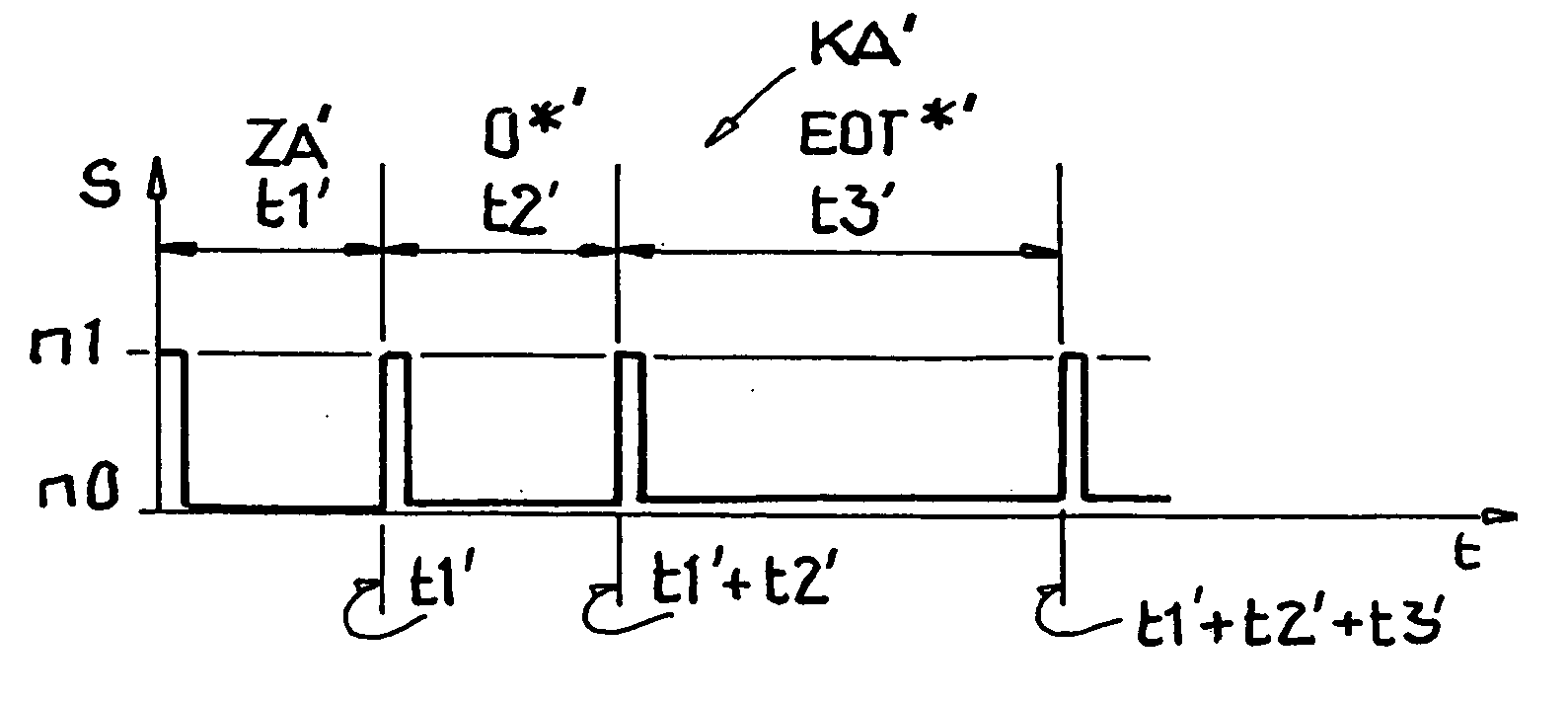Wireless data transmission between base station and transponder with transmission parameter adjusted based on transponder operating information
a transponder and wireless data technology, applied in the direction of transmission monitoring, wireless commuication services, instruments, etc., can solve the problems of inconsistency or scattering of the time resolution capability of individual transponders, and achieve the effect of large transmission rate range, optimized power requirements, and large achievable transmission distan
- Summary
- Abstract
- Description
- Claims
- Application Information
AI Technical Summary
Benefits of technology
Problems solved by technology
Method used
Image
Examples
Embodiment Construction
[0030] The schematic diagram of FIG. 1 shows a data packet DP that is transmitted from a base station to a transponder. While the base station and the transponder are not illustrated, they may have any conventionally known or future conceived construction and operation. As schematically shown, the data packet DP includes a header section KA, a following data section DA containing the useful data to be transmitted, and a final end section EA, modulated onto a carrier signal having a signal strength S between n0 and n1. For simplicity, FIG. 1 merely schematically shows the envelope of the data packet DP up to the maximum signal strength n1, without showing any of the signal pulses or the like actually making up the modulated signal.
[0031]FIG. 2A is a time diagram showing the time course of a portion of the signal strength S of the modulated signal transmitted by the base station, particularly representing the header section KA of a data packet DP according to FIG. 1. FIG. 2B, in conn...
PUM
 Login to View More
Login to View More Abstract
Description
Claims
Application Information
 Login to View More
Login to View More - R&D
- Intellectual Property
- Life Sciences
- Materials
- Tech Scout
- Unparalleled Data Quality
- Higher Quality Content
- 60% Fewer Hallucinations
Browse by: Latest US Patents, China's latest patents, Technical Efficacy Thesaurus, Application Domain, Technology Topic, Popular Technical Reports.
© 2025 PatSnap. All rights reserved.Legal|Privacy policy|Modern Slavery Act Transparency Statement|Sitemap|About US| Contact US: help@patsnap.com


